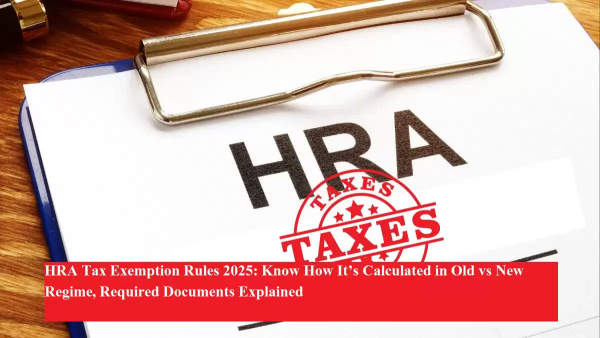
If you're a salaried employee filing Income Tax Returns (ITR) in 2025, you’ve probably wondered whether HRA (House Rent Allowance) still offers tax relief—especially under the new tax regime. HRA is a crucial part of many salary structures and plays a big role in reducing taxable income. However, the rules differ based on the tax regime you choose.
Let’s break down everything you need to know about HRA tax exemption, its calculation method, and the necessary documents you must submit to claim this deduction.
🏡 What Is HRA?House Rent Allowance (HRA) is a part of your salary provided by your employer to help cover your rented accommodation expenses. The main benefit of HRA is that it can reduce your tax liability, but only if certain conditions are met.
🆕 HRA in the New Tax Regime (Post 115BAC)Under the New Tax Regime (Section 115BAC), you cannot claim any tax exemption on HRA. In fact, many other common deductions are not allowed in the new system, including:
-
Leave Travel Concession (LTC)
-
Education and hostel allowance for children
-
Home loan interest deduction
-
Standard pension deductions
-
80C, 80D, and most other deductions (except 80CCD(2))
So, if you’ve opted for the new tax regime, you will not be eligible to claim HRA exemption at all.
🧾 HRA in the Old Tax Regime: Big Relief Still AvailableIf you continue with the old tax regime, you can claim exemption on HRA provided you pay rent and meet the required conditions. Even if you own a home and are repaying a home loan, you can still claim HRA if you're staying in a rented house for work.
📊 How Is HRA Tax Exemption Calculated?Under the old regime, your HRA tax exemption is calculated based on the least of the following three amounts:
Actual HRA received from employer
50% of basic salary (for metro cities) or 40% (for non-metro cities)
Rent paid minus 10% of basic salary
Let’s simplify with an example:
-
Annual HRA received: ₹3,20,000
-
Rent paid per year: ₹3,60,000
-
Basic salary: ₹8,00,000
-
City: Metro
Calculation:
-
50% of basic salary = ₹4,00,000
-
Rent paid - 10% of basic = ₹3,60,000 - ₹80,000 = ₹2,80,000
-
Actual HRA = ₹3,20,000
The lowest of these is ₹2,80,000, which will be exempt from tax. The remaining ₹40,000 will be taxed.
📑 Documents Required for Claiming HRATo claim HRA exemption in your ITR, you must submit the following:
-
Rent agreement
-
Rent receipts
-
PAN of landlord, if annual rent exceeds ₹1 lakh
-
Proof of rent payment, especially if the landlord is a relative
-
TDS records, if monthly rent exceeds ₹50,000
-
New tax regime offers no exemption on HRA
-
Old regime continues to offer substantial tax savings on HRA
-
Choose your tax regime wisely based on your income structure and eligible deductions
-
Proper documentation is essential for claiming HRA in ITR
So, before filing your ITR this year, weigh your options, calculate your savings, and don’t forget to keep your paperwork in order!









